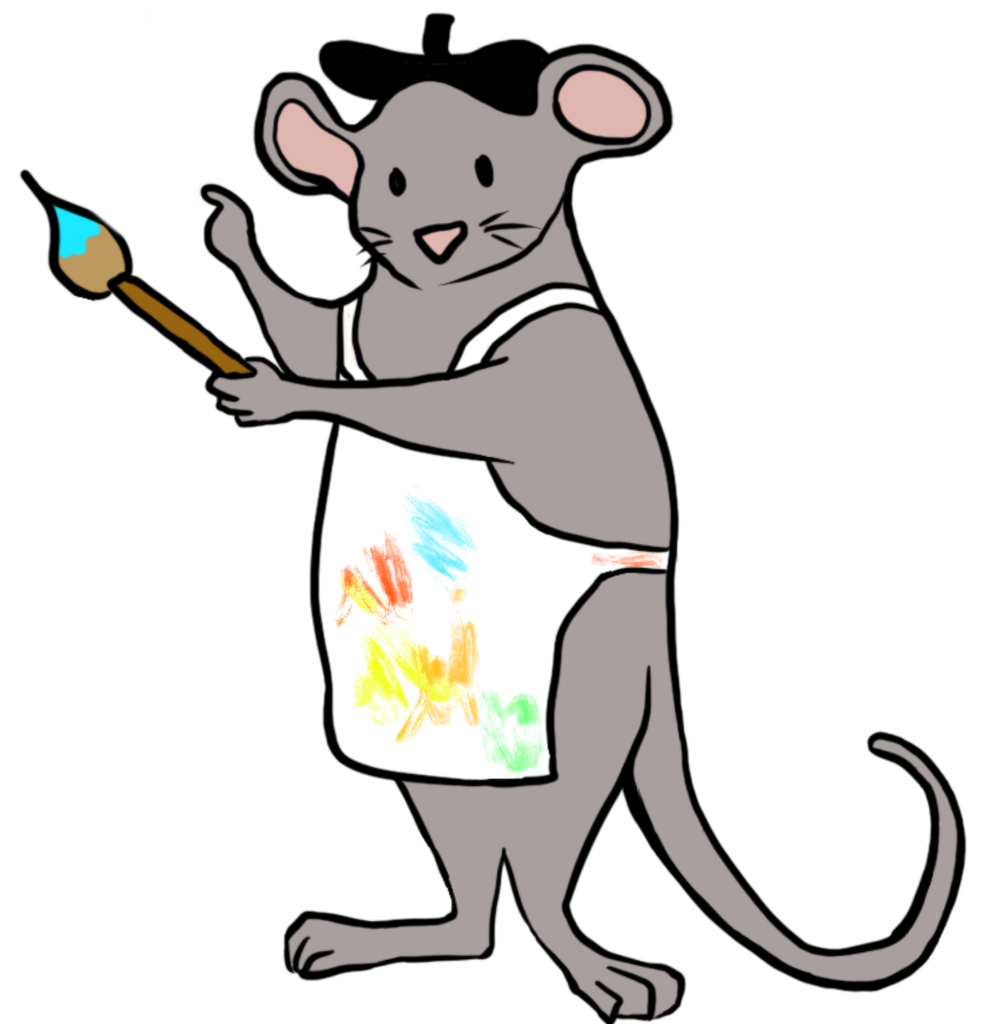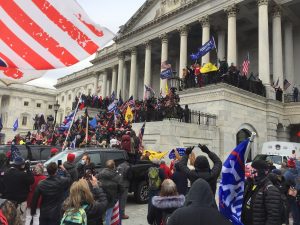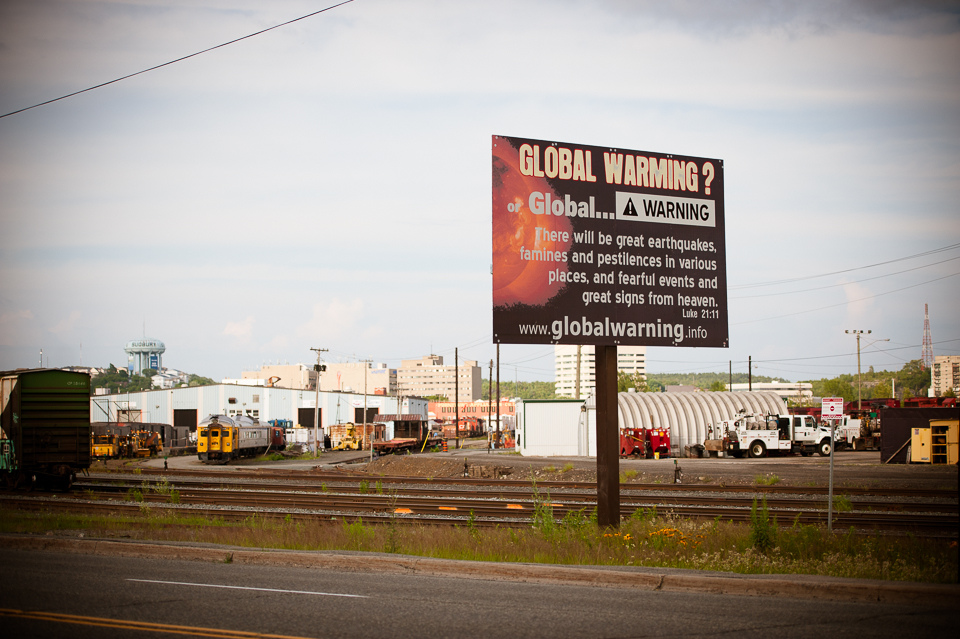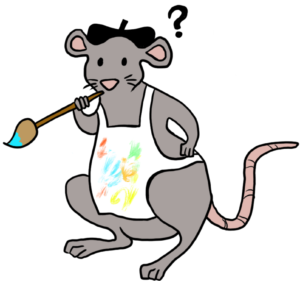Part 2: The Message
2.2 Truth and Denial
Learning Objectives
- To discuss the difference between denial and denialism.
- To recognize the key characteristics of denialist narratives.
- To describe theories for the development, proliferation, and evolution of denialism.
- To identify communication approaches that may or may not work when dealing with denialism.

When we are in denial, we are no longer allowing reasons to govern our values and actions. Indeed, denial means that we are not even prepared to engage with evidence or reasons at all. We all engage in “garden variety” denial: we ignore unpleasant truths that disturb our self perception. For example, we may passionately want to do our bit to mitigate climate change, but nonetheless thoroughly enjoy travelling to distant lands by airplane. We all know perfectly well that we and all whom we love are going to die, but rarely does this thought intrude into our ordinary interpersonal interactions.
Although related to our everyday practice of denial, there is another form of denial that is a distinct and much more pernicious threat to communication. In his book Denial: The

Unspeakable Truth (2018), sociologist Dr. Keith Kahn-Harris describes this form of “denialism” as “the transformation of the everyday practice of denial into a new way of seeing the world”; one that blends “corrosive doubt with corrosive credulity.” This means that a denialist, on principle, mistrusts or disbelieves what you are saying regardless of the strength of your reasoning or evidence, while at the same time accepting the views of others regardless of flimsy or absent evidence. Additionally, for many denialists, their denialism (although they would not label it as such) is a critical part of their identity, or more precisely, a defining characteristic of their tribe. For example, we know there is a loyal tribe who deny that American 2020 was a fair and democratic process but who instead believe that it was rigged by the Democrats without any evidence whatsoever. Since the denialist’s identity is at stake, none of the communication strategies that we use in the context of reasonable dialogue – engaging, debating, debunking, etc. – work well against denialism.
The first step to dealing with denialism is to recognize it. Keith Kahn-Harris describes four key characteristics of denialist narratives.
-
Radical doubt – Denialists demand that the opposition provide 100% incontrovertible proof 100% of the time while at the same time knowing that this is almost impossible. Any uncertainty, ambiguity, or disagreement is used to negate the argument of the opposition in its entirety. Interestingly, while non-denialists view revising an argument according to new evidence or reasons takes us one step closer to the ‘Truth’, denialists see any change in the story as an attempt to cover up our conspiratorial motives.
- Obsession with detail – Denialists often focus on minutiae. The entirety of a body of evidence is often too much to deny, therefore is it more effective to focus on small details. If any doubt can be ascribed to those details, then there is traction for radical doubt.
- Conspiratorial thinking – Belief in some sort of conspiracy to hide the ‘Truth’ is common to many denialist claims. However, the conspiracies are seldom fully described or explained. This is usually because they would require ‘vast, indefinite, and silent coordination across space and time’ such as the Big Pharma conspiracy theory.
- The backfire effect – The more evidence presented that counters the denialist narrative, the more firmly that narrative becomes entrenched. When evidence widens the gap between beliefs and reality, denialists are more likely to double down on their beliefs than abandon them.
Kahn-Harris argues that many communicators err in believing that “if only I could find the key to ‘make them understand,’ denialists would think just like me.” The problem with this viewpoint is that it is based on the assumption that we humans all ascribe to the same set of underlying values, so reasonable dialogue ought to get us to the same page. Kahn-Harris argues that this assumption is faulty, and that denialism is a product of unacknowledged ‘moral diversity.’ Specifically, if someone has ‘desires, values, ideologies, and morals’ that are significantly different than societal norms, and if that person believes that they cannot voice their viewpoint for fear of social reprisal, then they may turn to denialism in an attempt to discredit anything that conflicts with their core beliefs. An individual might turn to climate change denial, for example, rather than admit that they don’t want to undergo significant personal sacrifice just so future non-existent people do not have to deal with climate crisis.

Interestingly, just as a single pattern of inflammation can result from a wide variety of injuries, a single denialist narrative can have a wide variety of root causes. Thus, those that support the unbridled power of free-market capitalism, or who believe that only God has the power to change the natural world, may also become climate change deniers. This further complicates the situation, as a single group of denialists may have a significant diversity of underlying beliefs.
Denialism and close-minded allegiance to identity-anchoring tribes is hardly new, of course. What is new is the internet, and particularly social media, which have provided fertile ground for the growth of denialism. Given that the claims of denialists are not supported by evidence, denialist require the validation and support of a tribe. Before the internet, proselytizing to create an army of like-minded congregants required significant resources, time, energy. Not so in contemporary society. Denialists are led to like-minded devotees by algorithms designed to create echo chambers which ensures the emergence of a parallel reality undisturbed by opposing viewpoints. This parallel reality, in turn, excites the troops, which in turn, facilitates the recruitment of others to the cause. As Kahn-Harris explains, “it only takes a hardcore group of committed, hard working denialists to justify the gut feelings of many others.” For example, the Centre for Countering Digital Hate found that 65% of anti-vaccine content online comes from just 12 sources.
The internet has also changed the face of denialist dogma. Previously, many denialist arguments were carefully developed and consistently communicated. Denialists worked to meticulously construct a single, ‘alternate’ truth; however, the goal was still truth seeking (although a perverted form of it). Indeed, although such denialists were often characterised as being ‘anti-science,’ it is quite the opposite; such old-school denialists often sought to shroud their arguments in the trappings of science in order to lend a legitimacy to their alternative truth. The internet, however, has decimated the power of truth-seeking. Thus, for example, in his book Post Truth: The New War on Truth and How to Fight Back, Matthew D’Ancona notes that the Oxford Dictionary selected ‘Post-Truth’ as its word of the year in 2016, defining it as shorthand for ‘circumstances in which objective facts are less influential in shaping public opinion than appeals to emotion and personal belief’. D’Ancona argues that what has happened is that emotion is reclaiming its primacy and truth is in retreat and that as a result, the practice of politics is no longer perceived as a contest between truth-seeking ideas but as a zero-sum contest between tribes.
It is not surprising, then, that in this ‘post-truth’ era, denialist claims are proliferating even as they are becoming more random, superficial, bizarre, and easy to disprove. There is no longer any need to even attempt to appear to be truthful. A perfect example of this is Donald Trump’s infamous tweet that ‘The concept of global warming was created by the Chinese in order to make US manufacturing non-competitive.’ Kahn-Harris sees this as being one step away from denialists being able to ‘speak of one’s darker desires without shame.’ Indeed, Trump went on to say ‘Would I approve waterboarding? You bet your ass I would. In a heartbeat. I would approve more than that. If it works…and if it doesn’t work, they deserve it anyway for what they do to us.”
One might assume that limiting free speech either formally (e.g., through hate speech legislation) or informally (e.g., through ‘cancelling’ denialists) might be a solution. However, by limiting what we allow people to say, or by affirming only a very specific and narrow range of values, we may, actually widen the gap between what people truly believe and what they are allowed to express–and it is this gap that fosters the development of denialism. Or worse, such an approach may nudge ‘hard’ denialists into becoming ‘soft’ denialists. A ‘hard’ core climate denialist might morph into a ‘soft’ denialist and say, rather, that global warming is happening but that we will adapt or that there is nothing we can do about it. An evolution from hard to ‘soft’ denialism makes the situation even more problematic because the soft viewpoint aligns more closely with prevailing societal views, and so they are harder to recognize and can gain more traction than ‘harder’ denialist viewpoints.
What should we do about denialist speech? We know that ignoring denialism does not make it go away and that engaging in a war over ‘the facts’ is not only unproductive; it can backfire and drive denialists more firmly into their camps. Kahn-Harris argues that there is a third option that we have yet to explore. This alternative would involve trying to encourage denialists to give voice to the values that underpin their denial. For example, it might involve creating a space for global warming deniers to express their belief that the immediate benefit of fossil fuel consumption outweighs the inevitable harm to other societies, generations, and species. It might involve allowing antivaxxers to explain that the harm done by vaccine-preventable diseases is outweighed by the need to free society from the control of government or other groups perceived to be threatening (e.g., democrats, corporations, atheists, etc.). Unfortunately, Kahn-Harris stops short of instructing us on how exactly this might be done but he does dangle in front of us the tantalizing possibility that we might be able to identify and address the root issues rather than tilting at the windmills of ‘alternative facts.’ We might imagine that if we could truly understand the different tribes that ascribe to denialist narratives, we might finally be able to communicate about the values that are most meaningful to them. Perhaps, rather than continually telling people that vaccines are safe and effective, we might discuss whether or not we would be justified in mistrusting industrialized Western medicine or how to reconcile an all powerful God with the idea that a manufactured chemical can wield the power of life and death. Unfortunately, I leave this chapter open-ended as dealing with denialism has left many of us stumped. However, I hope that this discussion has at least added some nuance to your thinking about one of the greatest threats to communication we have ever faced.
Key Takeaways
- Denialism changes the way a person sees and interacts with the world around them. For a denialist, their denial is a critical part of their identity and often a defining characteristic of the ‘tribe’ or community that they belong to.
- Denialist narratives have several common characteristics regardless of what is being denied. These include radical doubt (i.e., the perspective that any uncertainty negates an entire body of evidence), obsession with detail, conspiratorial thinking, and the backfire effect (i.e., that evidence countering the denialist claim causes the denialist to hold on to their claim even more tightly).
- Ultimately, denialism is likely a result of underlying desires, values, ideologies, and morals that run counter to societal norms. People may turn to denialism to bridge the gap between what they believe and what they feel they can openly express.
- The internet, and particularly social media, has resulted in the proliferation of denialism and a decreased value placed on ‘truth’ or ‘evidence’ in denialist claims. This has become known as the ‘post-truth’ era.
- Many of the current communication tools we rely on don’t work for denialism. Identifying and disusing the beliefs and values at the root cause of denialist dogma may be an alternative.
Media Attributions
- Storming of the US Capitol © TapTheForwardAssist is licensed under a CC BY-NC-SA (Attribution NonCommercial ShareAlike) license
- Climate_change_denial_in_Sudbury © Caelie_Frampton is licensed under a CC BY (Attribution) license


